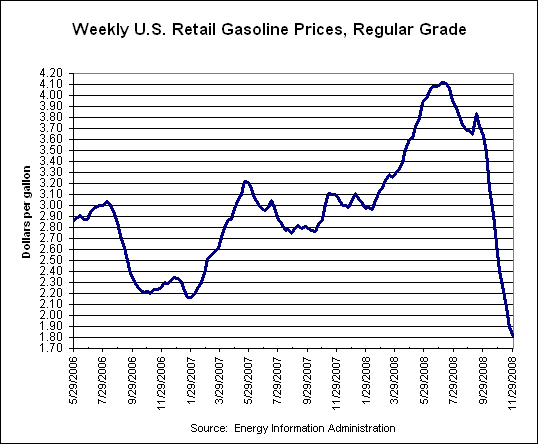John Petro
Despite lower gas prices, transit ridership still up
Gas prices began tanking in August, falling from about $4.10 a gallon to $1.80 a gallon today. But this piece in the Washington Post today shows that transit ridership hasn't fallen along with gasoline prices. Although the evidence at this point is still anecdotal, ridership numbers for October are higher than for the same period last year. At the same time Americans drove 4.4 percent fewer miles in September of 2008 than the same period last year.

Throughout the summer, when the media covered increased transit ridership, they invariably linked the surge to rising gas prices. As gas prices stabilize in the next months, we'll see how interconnected these prices are with transit ridership. The change in gas prices still doesn't change the cost of parking or the time spent in traffic.
It's vital that transit agencies are able to expand service to keep up with demand, however, or individuals will no longer view transit as a convenient alternative to driving. It's clear that if people are given the choice of using an efficient transit system many of them will choose to do so. It's up to the federal government now to make sure that transit projects are properly funded.
Streetsblog caught this little tidbit of information. If the American Association of State Highway and Transportation Officials (AASHTO) had their way, federal infrastructure investment in the next four years would look a lot like they have for the past 60 years.
At the heart of the group’s effort is a call for $545 billion worth of transportation infrastructure investment from 2010 through 2015 for highways ($375 billion), transit ($93 billion), freight movement ($42 billion, largely from sources outside the Highway Trust Fund), and intercity passenger rail ($35 billion).
Well, at least they mentioned transit and rail.
John Petro: Author Bio | Other Posts
Posted at 9:41 AM, Dec 02, 2008 in
Transporation | Urban Affairs
Permalink | Email to Friend










